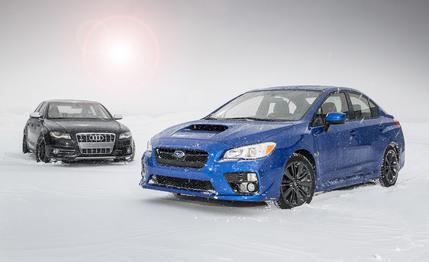
 Comparison Tests
Comparison Tests
These two sedans have more in common than just a chance encounter on the price curve. We’ve brought together a new Subaru WRX and a used Audi S4 because both have similar lineages, with four-wheel-drive systems whose roots extend back to the rally stage. They have similar performance, too: Both post nearly identical sub-five-second zero-to-60 times, mid-13-second quarter-miles, and mid-0.90-g roadholding numbers. But there’s something equally fundamental linking the two, and it is neither mechanical nor dynamic. It is the kinship of disappointment.
At the announcement of the 2010 Audi S4 and its 333-hp, supercharged 3.0-liter V-6, fans of the 2004–2008 S4’s 340-hp V-8 called out the new car for its lowered cylinder count, often in ways not even appropriate for the modern-day locker room. The WRX debuted this year to its own cool reception. Its live-bait styling, stagnant power rating, and common Impreza platform underwhelmed enthusiasts expecting something closer to the WRX concept shown at the 2013 New York auto show.
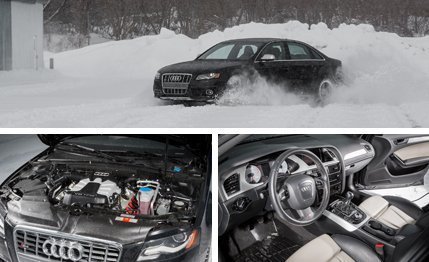

Note: All this nattering came from quarters overly familiar with the cars’ spec sheets but not with their over-the-road behavior. This S4 hit pavement and promptly dusted an E90-series BMW 335i in a comparison test. It did so with a carefully tailored mechanical package whose mightiest stitch may be its optional torque-vectoring rear diff. We said, “The active rear differential, which pushes one side or the other to aim the car . . . is so pronounced on a skidpad that it feels like four-wheel steering.” Also from that same comparison test: “The S4’s grip and path control is dazzling and convincingly outclasses the 335i.” The car then went on to wreath itself in more glory, winning a 10Best award for 2010. What we’re talking about here is one of the best sports sedans ever made.
This Subaru WRX will never be confused with the overachiever in its segment because, really, it has no segment. No other turbocharged, rally-inflected sedan is as affordable as the WRX. And no breathed-upon economy car has such an unconventional engine, such a serious four-wheel-drive system, or such a Tony Montanian taste for white powder.
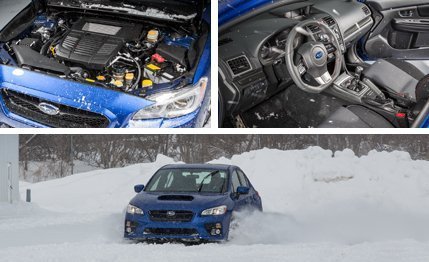

Though lonely, this little sedan is tuned to make friends. By stiffening the Impreza suspension substantially and adding its own kind of brake-based torque-vectoring unit (albeit on the front, rather than the correct, axle), Subaru has turned this WRX into a master of cornering precision, a conscientious objector to the laws of brake dive and acceleration squat. “Previously,” we wrote in its road test, “the WRX left dynamic finesse to the pricier STI version.” Well, not anymore.
The WRX feels very much like the S4’s little brother. Though made of flimsier stuff, the Subaru’s cabin is now a simulacrum of the German car’s, from its excellent seats and control relationships right down to the knurled HVAC knobs and high-mounted info screen. The WRX feels light, trim, and eager on the road, whereas the S4’s six-pack feels buried under a uniform layer of, well—how to put this—a life well lived. This is no bad thing. The Audi’s higher initial sticker price buys that extra measure of cushion, netting a bimodal car that’s laid back when cruising yet aggressive when cornering. The WRX is always snare-tight and ready to play, without the suppleness and damping inherent in the S4’s every move.
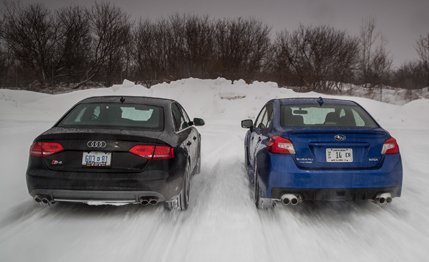

The Subaru’s power only comes on after 2200 rpm, as boost gets air-dropped into the flat-four. It’s thrilling, but it lacks the linearity or the upper-register intensity of the Audi’s blown V-6. Almost everything about these two cars is bound up in this pattern, this contrast by degrees: Both shifters have positive action, but the Subaru’s borders on notchy whereas the Audi’s feels well oiled. Stellar wheel and body control is common to both, even if the S4 is more progressive, less jumpy, and more grown-up. If there is an essential distinction between these two, it’s that the Subaru speeds the road up, while the Audi slows it down.
Each came to us on winter tires that did little to alter their characters. The S4 was aging beautifully, with only a slight buzz in the passenger’s door that could have been due to the extremely cold conditions in which it was driven. Although Audi has a less-than-stellar reputation for long-term quality, and its dealer service is expensive, statistics show that the only real S4 issue to watch for is water-pump failure. The same study forecast no long-term issues with the Subaru. But even if a theoretical S4 proves more finicky than the platonic WRX, we would still take the Audi. We can deal with disappointment.
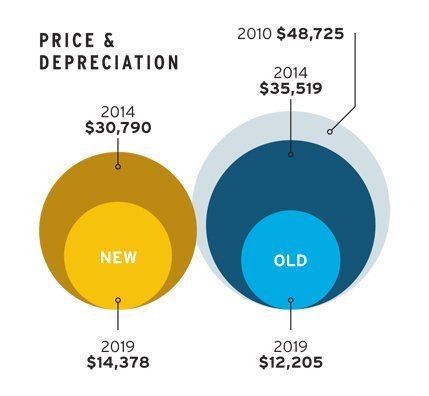

The Subaru WRX’s four-wheel-drive system splits torque between axles by means of a viscous coupling. Automatic brake applications at the inside front wheel diminish understeer.
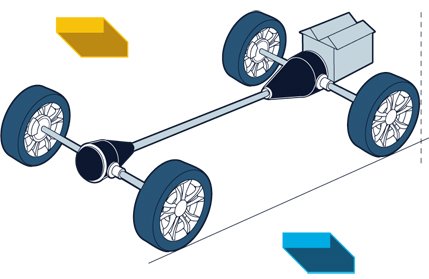

The Audi S4’s fifth-generation Quattro driveline is equipped with a Torsen center differential providing more torque to the rear in normal driving. The electronically controlled Sport rear differential overdrives the S4’s outside wheel to add a yaw moment in turns.
While depreciation can put once out-of-reach vehicles on your reality-based shopping list, remember that running costs are reliable crushers of automotive fantasy. To wit:
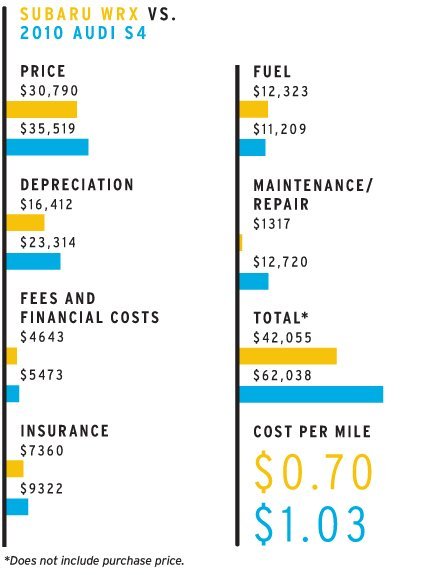
 Cost-of-ownership estimates provided by Vincentric, based on 7500 annual miles for sports cars and 12,000 for others. Residual values from Black Book.
Cost-of-ownership estimates provided by Vincentric, based on 7500 annual miles for sports cars and 12,000 for others. Residual values from Black Book.





